Ecuador, despite its relatively modest size, is widely considered to be one of the most interesting countries in South America due to the wide variety of indigenous cultures, colonial architecture, picturesque landscapes, and deep rainforests that it has. This lovely country of over 18 million inhabitants, located on the western coast of the continent and no larger than the majority of the states in the United States, is a magnet for tourists from all over the world for a variety of different reasons. It is surrounded by Colombia, Peru, and the Pacific Ocean.
Climbing and hiking are two of the most popular activities for people who enjoy being outside and participating in adventures. The verdant and biologically significant woods of Ecuador are the primary lure for nature enthusiasts, while the Galápagos Islands, which are also located in Ecuador, are a popular destination for anyone interested in wildlife observation. And for sun seekers? There is a consensus among beach enthusiasts that Ecuador's tropical beaches are among the world's most beautiful and untouched examples of their type.
Ecuador, which was formerly a member of the Inca Empire and later became a part of the Spanish Empire, still displays various influences from both of these groups today. These lasting influences are arguably nowhere more obvious than in the rich culture of its people and the spectacular colonial architecture of the capital city of Quito, which has been designated as a large portion of a UNESCO World Heritage Site. Quito is home to a large number of buildings that have been designated as World Heritage Sites.
1. The archipelago of Galápagos
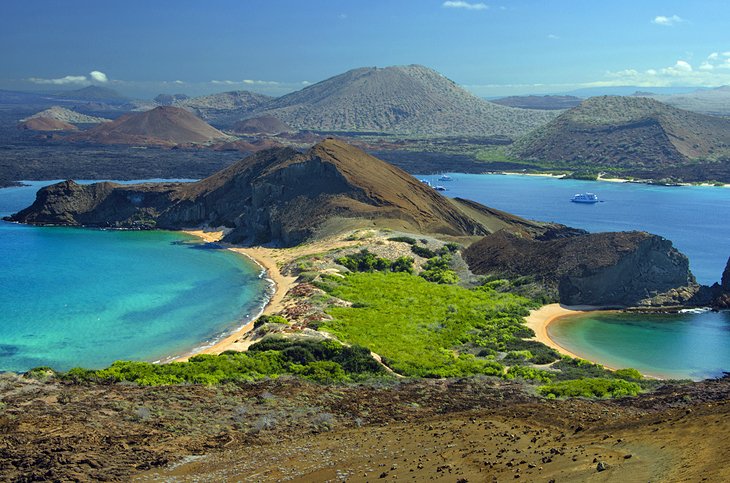
Since their "discovery" in the 16th century, the Galápagos Islands have attracted travelers from all corners of the world who are captivated and motivated by their natural beauty. This UNESCO World Heritage Site was given its name after the gigantic tortoises that can be found on the islands. It is home to a distinct ecosystem that has developed in large part without significant input from outside sources (the mainland of Ecuador is about 1,000 kilometers to the east). Consequently, a trip to this area of the country that has not been developed provides an amazing opportunity to witness native species. You will have the opportunity to observe a wide array of unusual animals both on land and in the waters that surround this area.
The Galápagos Islands continue to be one of the most active volcanic locations in the world, and the islands themselves are still in the process of being formed. In the 1950s, the majority of the 13 large islands, six smaller islands, and 42 islets that make up the Galápagos were designated as part of the Galápagos National Park. This protected area is home to a variety of unique plant and animal species.
It should not come as a surprise that exploring this vulnerable ecosystem can only be done so as part of a guided excursion to one of the locations specifically allocated for tourists. However, there are one or two sites that visitors can travel to on their own without the assistance of a guide. These areas include several spots that are common among scuba divers.
The region's many rare bird species, of which there are 28 that can only be found on the islands, are the primary draw for visitors. These include the Galápagos penguin, the flightless cormorant, and the waved albatross, in addition to the 13 species of the famous finches that Darwin discovered.
Tip of the Day: If you are fortunate enough to travel to the Galapagos Islands, make it a point to schedule a behind-the-scenes tour of the Charles Darwin Research Station in Puerto Ayora, which is located on Santa Cruz Island. This will give you an inside look at the work that is done there. It is possible to schedule tours of this significant research institution in advance of your trip, and doing so is something that you should really consider doing.
2. Quito: Ecuador's Historic Andean Capital

Quito, the capital city of Ecuador, is the largest historic town in South America and is located at a high altitude in the Andes Mountains. The city is packed with well-preserved specimens of colonial architecture. This city of 1.6 million people has long been a favorite among craftsmen, and it is an excellent place to buy for local art and crafts, including anything from colorful apparel to ceramics and wood carvings. It is also a UNESCO World Heritage site because of its numerous old churches, attractive public squares, and world-class museums.
The San Francisco Church, which is located on Plaza San Francisco, is often considered to be the most well-known landmark in Quito's historic center. The twin towers of the church, which date back to the early part of the 1500s and have been washed in white, are located on either side of the entry to this enormous complex. It is famous for its magnificent Baroque interior as well as the Convent Museum of San Francisco, which features china, linens, handcrafted furniture, sculptures, carvings, and paintings depicting religious themes.
One of the other breathtaking churches in the area is the Church of the Compania de Jesus. It was built at the beginning of the 17th century and is currently recognized by UNESCO as one of the top 100 most important buildings in the entire world. The Basilica del Voto Nacional in Quito, which dates back to the 1560s when it was built, is another beautiful structure in the city.
Exploring Plaza Grande is highly recommended as one of the best things to do in Quito. This lovely area is encircled on all sides by significant landmarks and buildings, such as the cathedral, the Presidential Palace, and the Archbishop's Palace. It is also the location of the Municipal Palace, in addition to Calle La Ronda, which is a lively boulevard that is lined with restaurants, cafes, art galleries, and other forms of entertainment.
3. Cuenca
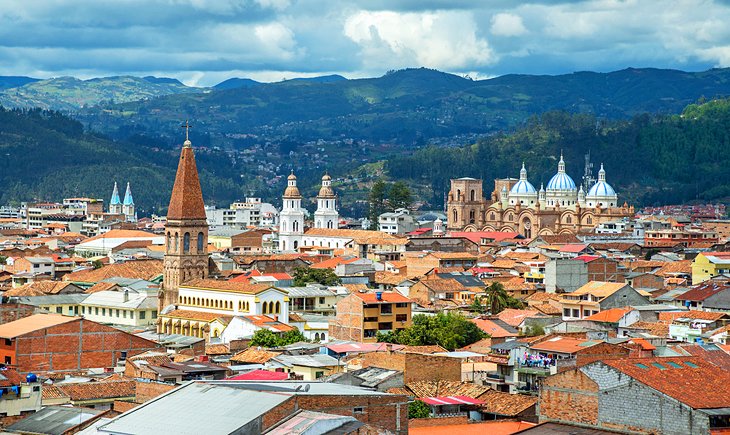
The stunning city of Cuenca, which gets its name from its formal name, Santa Ana de los cuatro rios de Cuenca, can be found in the southern part of Ecuador. This gorgeous city has a population of over 660,000 people, and it is a wonderful spot to come and explore on foot. The city, which has been given the UNESCO World Heritage Site designation, is filled to the brim with magnificent colonial influences and architectural masterpieces that date back 400 years and incorporate both Spanish and Indian aspects.
The ancient city center is also home to several of Cuenca's most popular tourist destinations, with the Iglesia del Sagrario, popularly known as the Old Cathedral of Cuenca, being one of the most notable of these. The attractions of this structure, which was constructed in 1567 using stones taken from surrounding Inca buildings, include its tower clock, which dates back to 1751, its antique organ, which dates back to 1739, and the Museum for Religious Art.
The enormous New Cathedral of Cuenca is another attraction that is well worth seeing. It was constructed in the 1960s, and its three stunning domes covered in blue tiles make it difficult to overlook. It is also worthwhile to check out the Church of San Sebastian, which combines Gothic and Neoclassical styles in its architecture.
Be sure to spend some time visiting the city's many plazas and parks as you make your way through the charming little streets that make up Cuenca. The most notable of these include Calderon Park, which is located in the middle of the old town; Plaza San Blas Square, which is dominated by the Church of San Blas; and Plaza de San Francisco, which features merchants selling a variety of goods, including textiles.
4. The national parks of Cotopaxi and the Cajas
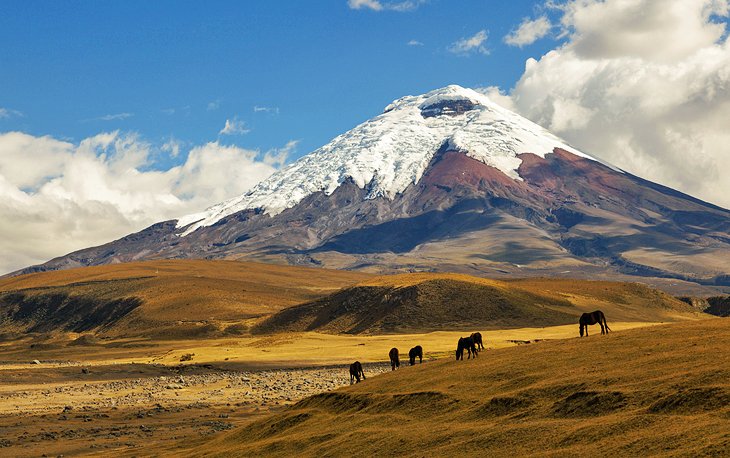
Both Cotopaxi and Cajas National Parks, which are among the most visited national parks in Ecuador, are conveniently located close to the cities of Cuenca and Quito, making them ideal destinations for day visits. Cotopaxi National Park (Parque Nacional Cotopaxi), which is located approximately 50 kilometers south of Quito, is likely the most well-known of the two parks.
One of the most exciting aspects of a trip is having the chance to get up close and personal with one of the many volcanoes. The most impressive of all is the enormous and, to this day, still active volcano located on Cotopaxi. This enormous volcano, which had its most recent eruption in 2015, is one of three volcanoes in the area, together with the lesser Rumiawi and Sincholagua volcanoes, that dominate the breathtaking terrain.
Cajas National Park (Parque Nacional Cajas), which is located approximately 30 kilometers away from Cuenca in Ecuador's breathtaking highlands, provides visitors with a radically different experience due to the park's varied hills and valleys, which make it an ideal spot for hiking and biking. Because it has more than 270 lagoons and lakes that are fed by glaciers, it is also a paradise for anyone who enjoy participating in water activities, particularly kayaking and canoeing.
In conclusion, Podocarpus National Park, which is frequently referred to as the "Botanical Garden of America," is home to a wide variety of plant and animal species. More than 4,000 different kinds of plants and trees call the humid mountain forests in the southeast region of the country home. These woods are located in the middle of the country. Some of these examples can reach heights of up to 40 meters, such as the well-known cinchona, which is the national tree of Ecuador.
related link: Best Attractions for Tourists to Visit in Ecuador
5.The Guayaquil Boardwalk comes in at
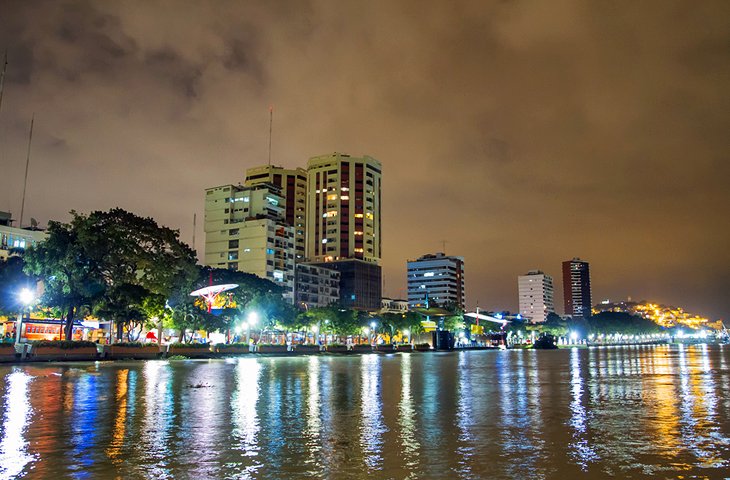
Guayaquil, located on Ecuador's Pacific coast and serving as a major port, is the country's most populous city with a population of over 2.7 million people and is often regarded as the entry point to the Galapagos Islands. In addition to the many ancient buildings it contains, Guayaquil is renowned for the excellent shopping and entertainment venues that can be found in the city's many gorgeous squares and plazas, as well as along its magnificent shoreline.
The spectacular Malecón 2000 is a boardwalk that is two and a half kilometers long and is located near to the Guayas River. This boardwalk is the highlight for people who prefer exploring on foot. This magnificent urban rehabilitation project is a promenade that wraps down the west bank of the river and passes several of the city's top attractions. It is without a doubt one of the most memorable promenades in the world.
You will pass by a great number of significant historical monuments, parks, museums, and entertainment venues as you make your way along the route. Take a tour boat up the river in the evening when the city is lit up to wonderful effect for a genuine treat, when you can see it at its most lovely.
The magnificent Guayaquil Metropolitan Cathedral and the Museum of Anthropology and Contemporary Art are also among the city's most popular attractions. The latter is a destination that should not be missed due to the amazing exhibits and collections it has that focus on the wealthy history and culture of the country.
6. La Nariz del Diablo: The Devil's Nose
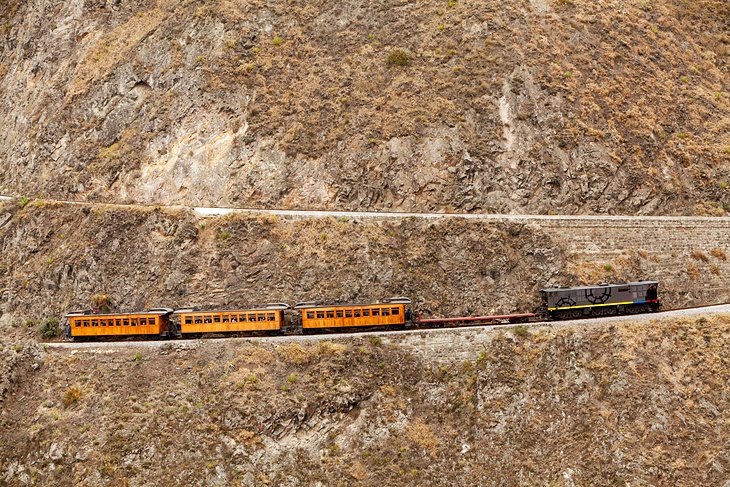
Everyone should make it a priority to check "The Devil's Nose" (also known as "La Nariz del Diablo") off their list of places to see in their lifetime. It doesn't matter if you're a fan of trains or not; the most enjoyable way to experience this breathtaking section of the Andes mountains close to the town of Alaus is by riding one of the country's excellently preserved railways.
The one-way journey to Nariz del Diablo, which is twelve kilometers long and includes a return trip, is without a doubt one of the most well-liked among those that are a part of a network that travels across the country to some of its most beautiful sites. The highlights include a great observation excursion aboard a train that climbs the nearly vertical walls of the mountain to the viewing station at the mountain's top. The train makes its way up the mountain by zigzagging over a series of switchbacks.
Along the trip, you will have the opportunity to immerse yourself in the Andes' diverse cultural traditions. One of the highlights of the trip is a visit to the Puuna Condor Museum, which features exhibits and displays connected to the indigenous people who once inhabited the area.
7. The Baos Hot Springs (Baos Hot Springs)
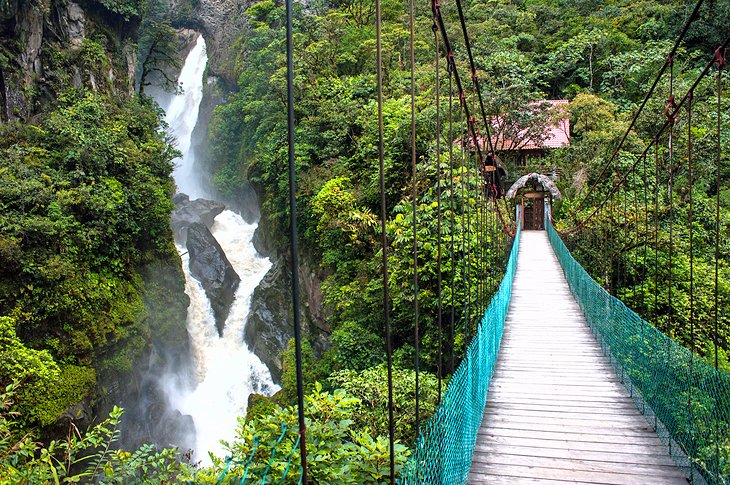
The little hamlet of Baos de Agua Santa is a well-known tourist destination in the central region of Ecuador. This is due to the town's beautiful surroundings as well as its abundance of hot springs. In the westernmost part of the Amazon basin lies the town of Baos, which is surrounded on all sides by thick jungle-like trees and provides a wide variety of chances for outdoor recreation, such as hiking and mountain riding.
However, the main draws of the area are the abundant waterfalls and mineral-rich hot springs. The town is conveniently located near several of these stunning waterfalls, and access can be gained to them by a network of hiking paths that have rope bridges and offer breathtaking perspectives of the waterfalls and the pools below them.
Whitewater rafting and kayaking are two of the most common forms of adventure sports practiced in this region. Visits to historical sites, such as the Virgen de Agua Santa church, which houses a well-known figure of the Virgin Mary and is associated with the legend that she first appeared at one of the town's waterfalls, are among the more tranquil activities available.
Shopping for local goods is one of the other activities available in the Baos de Agua Santa area. Parrots carved from colorful balsa wood are among the most popular gifts to take home from Ecuador that can be purchased here. Be sure to try some of the town's famed "melcocha," which is a type of candy derived from sugar cane.
8. Otavalo Market
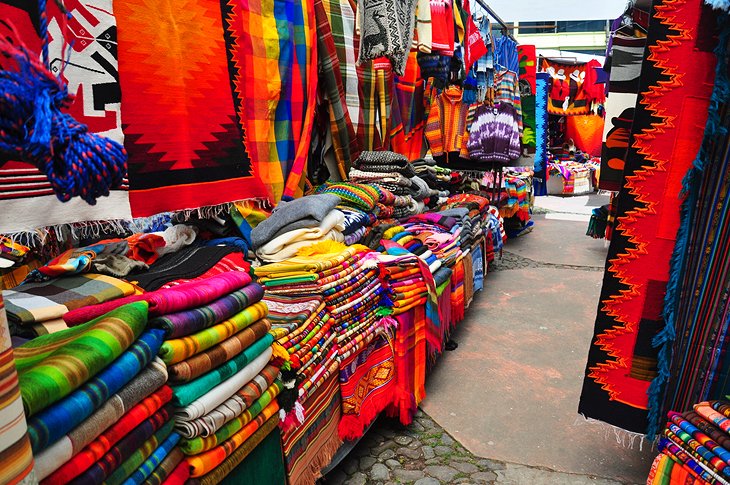
Otavalo is a lovely town that is located in a valley that is flanked on all sides by mountains. The indigenous Otavaleo people are responsible for the production of a variety of colorful rugs and blankets, sweaters, bags, and other wool products that are sold at the town's outstanding market, which is one of the largest in South America. This market is a major draw for the town and attracts both locals and tourists alike.
Other items that stand out include the one-of-a-kind jewelry made from tagua nuts, the leather goods, the indigenous costumes, and the numerous intriguing food items. Of these, the locally grown spices are among some of the most interesting in their own right.
If you happen to be in the area around the month of June, you shouldn't miss the world-famous Inti Raymi music festival, also known as the Festival of the Sun. This event has a wide variety of local performers, each of them plays an instrument and makes a sound that is uniquely their own.
9. Traveling to Tena, Ecuador, to Investigate the Upper Regions of the Amazon
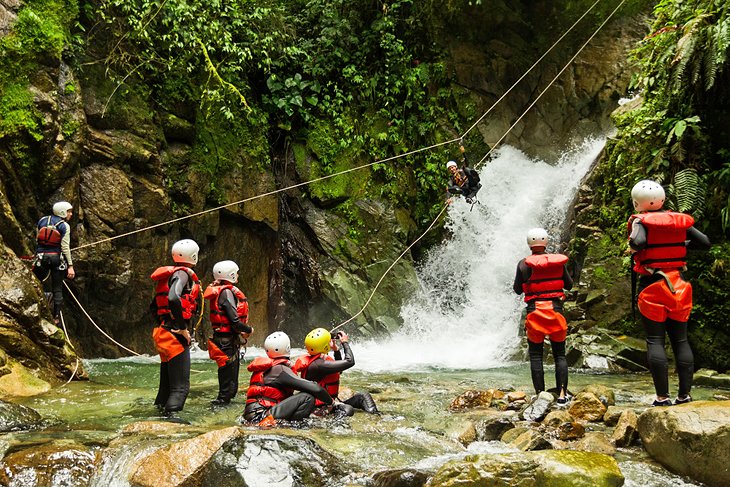
The city of Tena, which serves as the provincial seat of Napo, is another fantastic location that is well worth traveling to in order to get a taste of the immense Amazon basin. Tena, also known as the "capital of cinnamon" in Ecuador, was founded by missionaries not long after the Spanish arrived in South America. Today, the city is becoming increasingly popular as a tourism destination due to the numerous options for exciting new experiences it provides.
https://t.co/y2GcmjY2Qr
— Tariq Siddique (SEO Expert) (@mtariqsiddique9) April 29, 2020
8 Best Tourists Attractions to Visit in Ecuador!#Tourists #Ecuador #QatarAirwayscheapflights #QatarAirways #airlinetickets #faremakers #travelchannel pic.twitter.com/RezUUdk8CC
River travels, including whitewater rafting and canoeing, as well as jungle expeditions into the Amazon rainforest are some of the most popular things to do in this region. Popular activities in this region include paddling a kayak down the Tena, Misahualli, or Napo Rivers, the latter of which runs straight into the Amazon River.
Tena is home to a magnificent pedestrian bridge and tower that sits high over the Tena River and provides visitors with breathtaking views of the city. Those who want a more sedate experience on the river can take use of these amenities.
10. Salinas, Baha, and Montaita Beaches
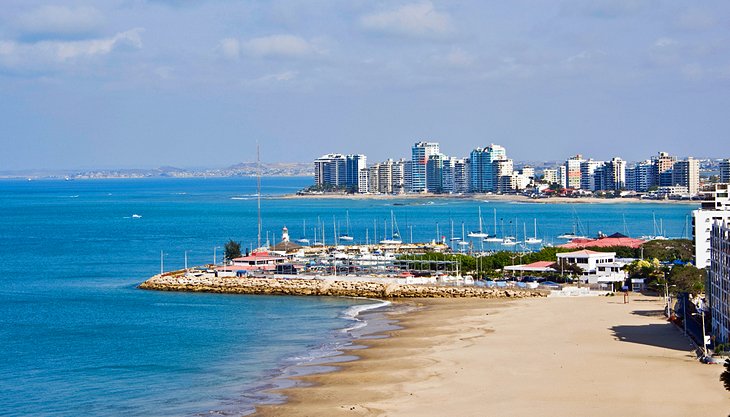
Ecuador is perhaps best known for its options for ecotourism and adventure travel; nevertheless, the country is also home to a variety of stunning beaches that are well worth the trip. You will have an abundance of options available to you, whether you want to take a brief break from sight seeing or use this location as a foundation for a longer beach, sand, and sea holiday.
The coastal city of Salinas, which is located a little to the west of Guayaquil and boasts a consistently mild environment throughout the year, is one of the most popular areas due to the many beach resorts that are located there.
The city of Bahia de Caraquez, which is located on the Pacific coast, is another famous destination. Baha, which is located on a picturesque peninsula that juts out into the ocean, is a popular tourist destination due to the high quality of its beaches, the abundance of hotels, and the vibrant nightlife that can be found there.
Another popular destination, particularly among younger tourists and surfers, is Montaita, which is located in the southern coastal region of the country (for families, head a little further south to the beaches of the fishing village of Ayangue, where you'll find more peace and quiet).

